|
 Secure Site
Secure Site
|
 |
Archive for the 'Now & Zen Alarm Clocks' Category
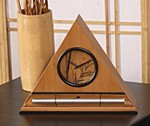 Zen Clocks by Now & Zen It would be nice if we could wake up every morning without an alarm. We fall asleep gradually, and it seems only natural that a gentle awakening is best for our physical and mental well-being. Some people wake up naturally at the same time every morning without any outside stimulus. But for most of us, an alarm clock is essential. The natural desire for a gradual awakening accounts for the popularity of “snooze buttons” on alarm clocks. But even the minimal effort required to push a snooze button can disrupt the experience of waking up gradually.
 Gentle Awakening The benefits of a more natural “progressive awakening” include better dream recall, prolonged alpha brain wave activity (in which you can make powerful suggestions to your preconscious mind), as well as a general feeling of being refreshed after a good night’s rest.
 Well-being The Zen Alarm Clock’s chime strikes become gradually more frequent over a ten minute period. The chimes progress according to a “golden ratio progression,” which is an ancient formula of sacred geometry used as a formula for beauty and harmony.
Posted in Natural Awakening, Now & Zen Alarm Clocks, Progressive Awakening
 lavendar The best herbs to relax after the holiday season.
Shopping, relatives, money—stress. The holiday season is supposed to be a time of joy, but it can also be exhausting. We asked some herbalists and health-care providers to suggest ways to relax after the holidays.
Relieve tension by filling a sachet with dried hops. Tuck it next to your pillow and settle down for a peaceful sleep. The aroma of hops is mildly sedative.
—Portia Meares, herbalist and author, Wolftown, VA
Unwind by soaking in a bath scented with a few drops of lavender oil.
Curl up with a cup of lemon-balm tea. Place 1 tablespoon of the dried herb in a tea ball, drop it in a teacup, add hot water. Set your Zen Timer with Chime and steep for 10 minutes.
Escape to a sunny vacation spot where you can relax in seclusion. People should vacation in winter, rather than summer; sunny weather gives people stamina to juggle busy schedules, while cold, short winter weather depletes energy.
—Paul Bergner, clinic director at the Rocky Mountain Center for Botanical Studies, Boulder, CO
Nourish the nervous system with herbal adaptogens such as oat seed. This herb contains alkaloids, believed to protect and rebuild the myelin sheath surrounding nerve cells. Take 30 drops of the extract twice a day.
Inhale the calming scent of rosemary essential oil. Mix a few drops into hand lotion or place a drop or two on a cotton ball.
—Feather Jones, practicing herbalist and owner of Turtle Island Herbs, Boulder, CO
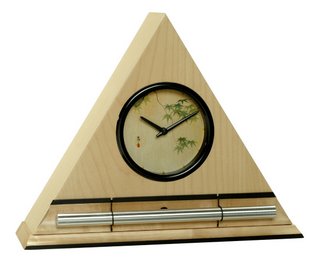 Zen Alarm Clock with Gentle Chime for Stress Reduction
Now & Zen
1638 Pearl Street
Boulder, CO 80302
(800) 779-6383
Posted in intention, nature, Now & Zen Alarm Clocks, wake up alarm clock
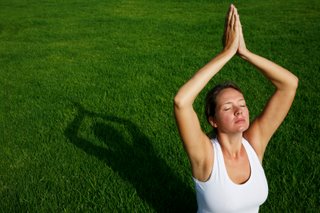 Outdoor Yoga That most familiar of asana sequences, Surya Namaskar (Sun Salutation) is as rich in symbolic and mythic overtones as it is in physical benefits.
In many cultures, light has long been a symbol of consciousness and self-illumination. “The world begins with the coming of light,” wrote Jungian analyst Erich Neumann in The Origins and History of Consciousness (Princeton University Press, 1995). “Opposition between light and darkness has informed the spiritual world of all peoples and molded it into shape.”
Our primary source of light is, of course, the sun. When we look at our closest star, we may see nothing more than a big yellow ball. But for thousands of years, the Hindus have revered the sun, which they call Surya, as both the physical and spiritual heart of our world and the creator of all life itself. That’s why one of Surya’s many other appellations is Savitri (the Vivifier), who, according to the Rig Veda, “begets and feeds mankind in various manners” (III.55.19). Moreover, since everything that exists originates from the sun, as Alain DaniŽlou wrote in The Myths and Gods of India (Inner Traditions, 1991), it “must contain the potentiality of all that is to be known.” For the Hindus, the sun is the “eye of the world” (loka chakshus), seeing and uniting all selves in itself, an image of and a pathway to the divine.
One of the means of honoring the sun is through the dynamic asana sequence Surya Namaskar (better known as Sun Salutation). The Sanskrit word namaskar stems from namas, which means “to bow to” or “to adore.” (The familiar phrase we use to close our yoga classes, namaste—te means “you”—also comes from this root.) Each Sun Salutation begins and ends with the joined-hands mudra (gesture) touched to the heart. This placement is no accident; only the heart can know the truth.
The ancient yogis taught that each of us replicates the world at large, embodying “rivers, seas, mountains, fields…stars and planets…the sun and moon” (Shiva Samhita, II.1-3). The outer sun, they asserted, is in reality a token of our own “inner sun,” which corresponds to our subtle, or spiritual, heart. Here is the seat of consciousness and higher wisdom (jnana) and, in some traditions, the domicile of the embodied self (jivatman).
It might seem strange to us that the yogis place the seat of wisdom in the heart, which we typically associate with our emotions, and not the brain. But in yoga, the brain is actually symbolized by the moon, which reflects the sun’s light but generates none of its own. This kind of knowledge is worthwhile for dealing with mundane affairs, and is even necessary to a certain extent for the lower stages of spiritual practice. But in the end, the brain is inherently limited in what it can know and is prone to what Patanjali calls misconception (viparyaya) or false knowledge of the self.
The eight basic postures, in order of performance, are Tadasana (Mountain Pose), Urdhva Hastasana (Upward Salute), Uttanasana (Standing Forward Bend), Lunge, Plank Pose, Chaturanga Dandasana (Four-Limbed Staff Pose), Urdhva Mukha Svanasana (Upward-Facing Dog Pose), and Adho Mukha Svanasana (Downward-Facing Dog Pose).
The transition from posture to posture is facilitated by either an inhalation or an exhalation. As you move through the sequence, watch your breath closely. Slow your pace or stop and rest entirely if your breathing becomes labored or shuts down altogether. Always breathe through your nose, not your mouth: Nasal breathing filters and warms incoming air and slows your breathing down, thereby lending the sequence a meditative quality and reducing the risk of hyperventilation.
To perform the sequence, start in Tadasana, with your hands together at your heart. Inhale and lift your arms overhead to Urdhva Hastasana, then exhale while lowering the arms down and fold your torso into Uttanasana. Then inhale, arch your torso into a slight backbend with the fingertips or palms pressed to the floor or blocks, and exhale while bringing your left foot back into a lunge. Inhale forward to Plank, then exhale and lower yourself into Chaturanga Dandasana. On an inhalation, arch your torso up as you straighten your arms into Upward Dog. Exhale back to Downward Dog; step the left foot forward on an inhalation into Lunge. Swing the right leg forward to Uttanasana on an exhalation, then lift your torso and reach your arms overhead on an inhalation to Urdhva Hastasana. Finally, lower your arms on an exhalation and return to your starting point, Tadasana.
Remember, this is only a half-round; you’ll need to repeat the sequence, switching left to right and right to left to complete a full round. If you’re just starting out, it might help to work on the poses individually before you put them together. (Visit www.YogaJournal.com for more how-to information.)
adapted from Yoga Journal, by Richard Rosen
Use our unique “Zen Clock” which functions as a Yoga Timer. It features a long-resonating acoustic chime that brings your meditation or yoga session to a gradual close, preserving the environment of stillness while also acting as an effective time signal. Our Yoga Timer & Clock can be programmed to chime at the end of the meditation or yoga session or periodically throughout the session as a kind of sonic yantra. The beauty and functionality of the Zen Clock/Timer makes it a meditation tool that can actually help you “make time” for meditation in your life. Bring yourself back to balance.
 Yoga timers from Boulder, Colorado Now & Zen – The Yoga Timer Store
1638 Pearl Street
Boulder, CO 80302
(800) 779-6383
Posted in intention, Now & Zen Alarm Clocks, wake up alarm clock, Well-being, yoga, Yoga Timer, Yoga Timers by Now & Zen
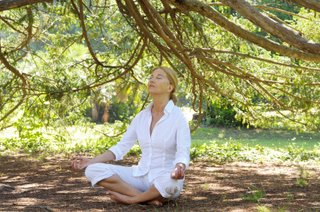 meditation under tree A good example of body-mind-body medicine is the work of Jon Kabat-Zinn, Ph.D., founder of the Stress Reduction Clinic at the University of Massachusetts Medical School and author of the bestsellers Full Catastrophe Living and Wherever You Go, There You Are. His Mindfulness-Based Stress Reduction (MBSR) approach, which combines gentle hatha yoga with mindfulness meditation, has garnered impressive results in scientific studies and is now taught at hundreds of hospitals and clinics worldwide.
In his work with patients with a wide variety of medical conditions, including chronic pain, cancer, arthritis, anxiety, and depression, Kabat-Zinn has observed that particular patients seem to respond better to some elements of the MBSR program. He has found that those with primarily physical complaints, such as joint pain, often do best when they use meditation to go through what he calls the “mind door.” Others, particularly those with mental problems such as anxiety or panic attacks, may do better with “body door” approaches like asana.
adapted from Yoga Journal by Timothy McCall, M.D.
Use our unique “Zen Clock” which functions as a Yoga Timer. It features a long-resonating acoustic chime that brings your meditation or yoga session to a gradual close, preserving the environment of stillness while also acting as an effective time signal. Our Yoga Timer & Clock can be programmed to chime at the end of the meditation or yoga session or periodically throughout the session as a kind of sonic yantra. The beauty and functionality of the Zen Clock/Timer makes it a meditation tool that can actually help you “make time” for meditation in your life. Bring yourself back to balance.
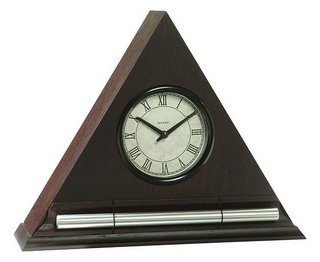 Gentle wake up alarm clock by Now & Zen Now & Zen – The Zen Alarm Clock & Timer Store
1638 Pearl Street
Boulder, CO 80302
(800) 779-6383
Posted in Chime Alarm Clocks, intention, Meditation Timers, Meditation Tools, mindfulness practice, Natural Awakening, Now & Zen Alarm Clocks, wake up alarm clock, yoga, Yoga Timer
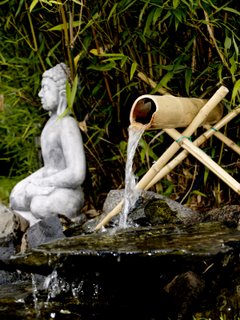 When less is more Make more time for doing the things you love by simplifying your life.
Judy Davis never buys anything new if she can help it. A 58-year-old freelance marketing consultant who lives in Red Bluff, California, she favors thrift store clothing and secondhand furniture. Instead of buying gifts, she gives plants from her garden or bags she has sewn from cut-up vintage gowns. Judy is part of a Bay Area group called the Compact. The Compacters have vowed not to buy anything new for a year except bare essentials: food, medicine, cleaning products, and underwear (although not, of course, lingerie from Paris). Although few people take frugality quite as seriously as the Compacters do, more and more of us are voluntarily cutting back on buying and consumption. Many individuals choosing this lifestyle happen to be yogis. The seminal work of yoga philosophy, Patanjali’s Yoga Sutra, frowns on materialism, and some yogis find that their asana practice alone helps them be happier with less.
The pursuit of the simple life is nothing new, of course. From Quakers to Transcendentalists, America has always had its share of those who associate simplicity with spiritual growth. Back-to-the-land hippies of the ’60s and ’70s found simplicity appealing for more secular reasons, such as ecological sustainability. But those who practice pared-down living today are not necessarily spiritual ascetics or off-the-grid granola types. Most are ordinary people modifying their everyday behavior-trying to be conscious about what they eat, drive, and buy.
In the past 15 years, “voluntary simplicity,” as it is called, has gained thousands of converts. Many books on the subject have been published, such as Janet Luhrs’s The Simple Living Guide, Cecile Andrews’s Circle of Simplicity: Return to the Good Life, and Linda Breen Pierce’s Choosing Simplicity: Real People Finding Peace and Fulfillment in a Complex World. Dozens of websites have sprung up, and nonprofits like Seeds of Simplicity and Simple Living America champion the cause. When the Compacters publicized their manifesto in January 2006, their Yahoo group swelled from about 50 in February to 1,225 in July, with members across America.
Most spiritual traditions encourage simple living, and yoga is no exception. In the Yoga Sutra, Patanjali laid out the yamas (moral restraints) and niyamas (observances), a set of 10 principles that are crucial to one’s progress along the yogic path. One of the yamas is aparigraha, often translated as “greedlessness.” But it means more than just taking only what you need, explains David Frawley, founder and director of the American Institute of Vedic Studies and author of Yoga and the Sacred Fire. Aparigraha also means “not having a lot of unnecessary things around yourself and not hankering after what other people have,” Frawley says. In other words, aparigraha also means keeping only what you need and wanting only what you need.
Aparigraha leads naturally to one of the niyamas: santosha, or “contentment,” being satisfied with the resources at hand and not desiring more. Ultimately, Frawley says, “Yoga is about transcending the desire for external things, which is the cause of suffering, and finding peace and happiness within.”
adapted from Yoga Journal, by Helena Echlin
 Zen Alarm Clocks Now & Zen
1638 Pearl Street
Boulder, CO 80302
(800) 779-6383
Posted in intention, Meditation Timers, Meditation Tools, mindfulness practice, Now & Zen Alarm Clocks, Well-being, zen, Zen Alarm Clock, Zen Timers
 Healing Gems In this relaxing ritual, you’ll gather stones to stimulate the body’s seven main energy centers, or chakras, in the Ayurvedic tradition. While many massage therapists use large stones to massage out tension in muscles, simply placing stones at strategic points on the body can encourage relaxation.
On a sunny day, take a stroll along the beach to gather seven dark-colored, smooth, round stones, preferably 1 or 2 inches in diameter. Set your Zen Timer to 15 minutes. Set them down in a sunny spot and allow them to warm up for 10 to 15 minutes. When you’re ready, lie flat on your back and place a stone on each of the seven chakras (see Vital Energy Centers), one by one. Let your body relax and sink into the ground; feel the weight of each stone and the sensation it creates on your skin. Visualize energy radiating from each chakra through your body, from the top of your head through your toes. Set your Zen Timer for 20 minutes. Relax for about 20 minutes, and then remove the stones.
adapted from Body + Soul, July/August 2006
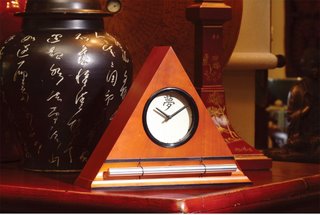 Zen Timers Now & Zen
1638 Pearl Street
Boulder, CO 80302
(800) 779-6383
Posted in intention, Meditation Timers, mindfulness practice, Now & Zen Alarm Clocks, Well-being, Zen Alarm Clock, Zen Timers
 Stress Cures From traffic jams to lost luggage, holiday travel can leave you frazzled. This year, get the holidays off to a stress-free start by arriving at your final destination composed and energized. Just follow these simple tips from Kate Hanley, author of The Anywhere, Anytime Chill Guide.
Stretch It Out
Where stress starts, tight muscles follow. Ease the strain of hours sitting in the sky or on the road with a simple, seated stretch Hanley calls The Number Four: Place an ankle over the opposite knee (making the shape of a four) then lean forward and rest your elbows on your shin.
Apply Pressure
If icy roads or midflight turbulence leave you with a pounding heart and racing thoughts, Hanley recommends a little acupressure. Simply curl each finger down until it touches the palm. The subtle move lessens anxiety by slowing down the heart and, in turn, quieting the mind.
Say It Out Loud
“The very act of traveling requires an element of surrender,” says Hanley. When plans go awry (a delayed flight, a missed exit) — and they will — slowly repeat the mantra “I’ll get there when I get there.” This helps you stay mindful of what’s out of your control.
Wish Them Well
With everyone rushing to get from point A to point B, you’re guaranteed to run in to someone who will ruffle your feathers. “The trick to not losing your cool,” says Hanley, “is to develop compassion.” Instead of flying off the handle at that impatient driver or curt customer service rep, try a kindness meditation. Hold an image of them in your mind and put yourself in their shoes with an empathetic thought: “I’m sure he’s anxious to see his family” or “I bet she’s had a long day.”
adapted from Body + Soul November 2009
 Zen Timer for your wellbeing practice Now & Zen
1638 Pearl Street
Boulder, CO 80302
(800) 779-6383
Posted in Chime Alarm Clocks, intention, Meditation Timers, Meditation Tools, mindfulness practice, Now & Zen Alarm Clocks, Well-being, Zen Timers
 the sleep and pain connection Waking up in the idle of the night can be a pain — literally. New research from John’s Hopkins University shows that prolonged sleep disturbances may contribute to chronic pain, most likely by hindering the body’s natural pain-control functions. The study followed 32 healthy women for a week: For three nights, one group of participants was woken up every hour for eight hours, while the rest slept undisturbed. On the following days, women in the disrupted-sleep group experienced an increase in spontaneous pain.
If you do wake up during the night, help yourself swiftly return to dreamland by breathing deeply and counting each breath. “And don’t try to recover by consuming a lot of caffeine the next day,” urges sleep specialist and neurologist Dr. Sarah Zallek. “That’s just going to make you more likely to have another bad night of sleep.”
adapted from Body + Soul 2007
 Bamboo Digital Wake Up Clock Now & Zen’s Alarm Clock Store
1638 Pearl Street
Boulder, CO 80302
(800) 779-6383
Posted in Insomnia, Natural Awakening, Now & Zen Alarm Clocks, sleep, wake up alarm clock, Well-being
 Set your Zen Alarm Clock at Night Today, in our too-fast, information-overloaded society, we’ve lost much of our connection to the Earth, to spirit, to nature’s cycles, to our own cycles. And yet, we still need things to feed us, to ground us, to give us courage and connection.
Good rituals are essential to our emotional, psychological, and spiritual health. To help reconnect us to the sacred aspects of our lives, we asked an expert to share everyday rituals that they’ve created or practice.
Sleep Practice
Bedtime is when we drop our defenses and become vulnerable. This is why most religions have a tradition of bedtime prayers, says Alexander. Today, she believes, most insomnia and disturbed nights are caused by overactive minds mulling over the day’s problems.
 chime alarm clock for a peaceful sleep
Intention
To mark the break from day to night and ease into a state of physical and mental relaxation.
Materials
Lavender oil, notebook, and writing utensil.
Steps
1. Change (or bathe) with intention. As you take off your clothes, visualize all your daytime anxieties and concerns dropping away. As you wash, imagine that you cleanse away all the negativity of the day.
2. Write down all the positive things that happened during your day.
3. Dab the Lavender oil on a handkerchief and place it near the bed. Lie down, breathe in the soothing scent of the oil, and cast your mind back over the day without judgment.
4. Set your Zen Alarm Clock to the time you need to wake up in the morning right before you go to bed. Use your Zen alarm clock to not only wake you up gradually in the morning, but as a blocker of all negativity. When your alarm clock is set, don’t think about your problems or agenda for tomorrow; instead concentrate on your breathing so you fall asleep peacefully.
Now & Zen Alarm Clocks has adapted this from Body + Soul Magazine
 Chime Alarm Clock For a Progressive Awakening Now & Zen
1638 Pearl Street
Boulder, CO 80302
(800) 779-6383
Posted in Chime Alarm Clocks, intention, mindfulness practice, Now & Zen Alarm Clocks, Progressive Awakening, sleep, Sleep Habits, wake up alarm clock, Well-being
 a walking practice You know that a brisk walk around the block can clear your head. But it can do even more. Walking rivals yoga, meditation, and tai chi as a powerful mindfulness practice, says Danny Dreyer, a running coach, ultramarathoner, and creator of the ChiRunning and ChiWalking programs. Dreyer has spent years teaching people how to use walking to relieve physical and mental stress by moving in a relaxed way and focusing on physical sensations.
In the following exercise, Dreyer shows how to elevate a simple walk to a meditation in motion, just by using breath and awareness to target tension and trigger the body’s relaxation response. Try this simple stress reliever before an important meeting, after a workday, or any time you need to recapture a calmer, more centered state of mind.
Find a Quiet Place
Choose to walk somewhere soothing — around a lake instead of along a busy road, for instance.
Tip: Don’t rush. Your goal here is to unwind, not to break a sweat or clock in miles. Do your best to maintain an easy gait.
Go Easy
Keep your pace comfortable (as if you don’t need to get anywhere fast) and your stride short.
Breathe Away Tension
Start with your head and observe any tension you might be feeling there. Take a deep inhale, and then with each exhale, imagine releasing tightness in your head and neck. Continue with your shoulders, arms, chest, belly, glutes, upper legs, lower legs, and feet. Spend several breaths on each area, gradually inviting every part of your body to relax. Repeat this exercise.
Take Time to Unwind
Walk for at least 15 minutes, or longer if you have time.
Tip: Focus on tension hot spots throughout your body; this will help you open up and unwind.
adapted from Body + Soul Magazine, September 2007 by Kate Hanley
 Dark Oak Zen Alarm Clock with Chime, a Meditation Timer
Now & Zen
1638 Pearl Street
Boulder, CO 80302
(800) 779-6383
Posted in Chime Alarm Clocks, intention, Meditation Timers, Meditation Tools, mindfulness practice, Now & Zen Alarm Clocks, Well-being, Zen Timepiece by Now & Zen, Zen Timers
« Previous Page — « Previous Entries
Next Entries » — Next Page »
|
|
|
|